
The United States Department of Transportation is a federal Cabinet department of the U.S. government concerned with transportation. It was established by an act of Congress on October 15, 1966, and began operation on April 1, 1967. It is governed by the United States Secretary of Transportation.

The Federal-Aid Highway Act of 1973 is legislation enacted by the United States Congress and signed into law on August 13, 1973, which provided funding for existing interstate and new urban and rural primary and secondary roads in the United States. It also funded a highway safety improvement program, and permitted states for the first time in U.S. history to use Highway Trust Fund money for mass transit. The law also established the first national speed limit.

The Northstar Line is a commuter rail route in the US state of Minnesota. Northstar runs 40 miles (64 km) from Big Lake to downtown Minneapolis at Target Field using existing track and right-of-way owned by the BNSF Railway. Passenger service began on November 16, 2009. The rail line serves part of the Northstar Corridor between Minneapolis and St. Cloud. Planning for the line began in 1997 when the Northstar Corridor Development Authority (NCDA) was formed. The corridor is mostly served by Interstate 94 and U.S. Highway 10.

The Washington Metropolitan Area Transit Authority, commonly referred to as Metro, is a tri-jurisdictional government agency that operates transit service in the Washington metropolitan area. WMATA was created by the United States Congress as an interstate compact between the District of Columbia, the State of Maryland, and the Commonwealth of Virginia.

Carol Molnau served as the 46th lieutenant governor of Minnesota, from 2003 to 2011. She formerly served as head of the Minnesota Department of Transportation (Mn/DOT). She is known for her opposition to state funding of the mass transit systems of the Minneapolis–Saint Paul metropolitan area.

The Downeaster is a 145-mile (233 km) regional passenger train service, managed by the Northern New England Passenger Rail Authority (NNEPRA), an agency of the state of Maine, and operated by Amtrak. Named for the Down East region of Maine, the train runs from North Station in Boston, Massachusetts to Brunswick, Maine, with 10 intermediate stops. The train operates five daily round trips between Boston and Brunswick.

The Chicago Hub Network is a collection of proposed fast conventional and high-speed rail lines in the Midwestern United States including 3,000 miles (5,000 km) of track. Since the 1990s, there have been multiple proposals to improve the links from Chicago, Illinois to major destinations including Indianapolis, Detroit, Cleveland, Kansas City, Missouri, St. Louis, Cincinnati, Louisville, Milwaukee, Madison, and Minneapolis/St. Paul, Minnesota. In addition, lines would connect through to major cities in Canada. Eastern routes would blend into the Ohio Hub network. In addition to providing better connections between Midwestern cities, the projects are intended to reduce or eliminate the operating subsidies that American passenger train routes currently require.
The Minnesota Department of Transportation oversees transportation by all modes including land, water, air rail, walking and bicycling in the U.S. state of Minnesota. The cabinet-level agency is responsible for maintaining the state's trunk highway system, funding municipal airports and maintaining radio navigation aids, and other activities. Carol Molnau, who served as Minnesota's lieutenant governor under Tim Pawlenty, led the department as Commissioner of Transportation from the start of the Pawlenty administration in 2003 until her February 2008 removal in the aftermath of the I-35W Mississippi River bridge collapse. Thomas K. "Tom" Sorel succeeded her as commissioner and was reappointed when Mark Dayton became governor. Sorel has resigned from his position effective December 1, 2012, and his deputy commissioner, Bernard J. "Bernie" Arseneau, was appointed to act as interim commissioner. On December 15, 2012, Governor Mark Dayton announced that Charlie Zelle, CEO of Jefferson Lines, would be MnDOT's next commissioner, effective January 15, 2013.
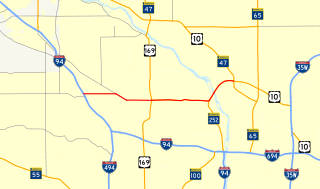
Minnesota State Highway 610 (MN 610) is an east–west freeway in the Twin Cities region of Minnesota. The freeway connects Interstate 94 (I-94), County Road 81, CR 130 in northern Hennepin County, and US Highway 52 to U.S. Highway 10 (US 10) in southern Anoka County. MN 610 crosses the Mississippi River on the Richard P. Braun Bridge between suburban Brooklyn Park and Coon Rapids. The highway is 12.3 miles (19.8 km) long.

The I-35W Mississippi River bridge was an eight-lane, steel truss arch bridge that carried Interstate 35W across the Saint Anthony Falls of the Mississippi River in Minneapolis, Minnesota, United States. The bridge opened in 1967 and was Minnesota's third busiest, carrying 140,000 vehicles daily. It had a catastrophic failure during the evening rush hour on August 1, 2007, killing 13 people and injuring 145. The NTSB cited a design flaw as the likely cause of the collapse, noting that a too-thin gusset plate ripped along a line of rivets, and additional weight on the bridge at the time contributed to the catastrophic failure.

The Hartford Line is a commuter rail service between New Haven, Connecticut, and Springfield, Massachusetts, using Amtrak's New Haven–Springfield Line. The project is a joint venture between the states of Connecticut and Massachusetts, with support from the federal government as well. Amtrak and CTrail-branded trains provide service along the corridor, and riders can use Hartford Line tickets to travel on board most Amtrak trains along the corridor at the same prices. The service launched on June 16, 2018.
The METRO Orange Line, also known as the I-35W Bus Rapid Transitway, is an under construction bus rapid transit line extending from downtown Minneapolis, Minnesota to Lakeville, Minnesota along Interstate 35W.
In addition to the proposed transit projects in the Twin Cities region, there have been some transit corridors that are no longer proposed.
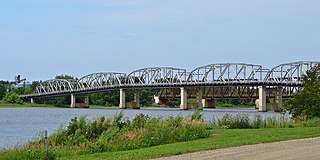
The Baudette – Rainy River International Bridge is an international bridge connecting Rainy River, Ontario, Canada, with Baudette, Minnesota, United States, across the Rainy River.

The I-35W Saint Anthony Falls Bridge crosses the Saint Anthony Falls of the Mississippi River in Minneapolis, Minnesota in the U.S., carrying north-south traffic on Interstate Highway 35W. The ten-lane bridge replaced the I-35W Mississippi River bridge, which collapsed on August 1, 2007. It was planned and is maintained by the Minnesota Department of Transportation (Mn/DOT). The planning, design, and construction processes were completed more quickly than normal because Interstate 35W is a critical artery for commuters and truck freight. The bridge opened September 18, 2008, well ahead of the original goal of December 24.
The Northern Lights Express (NLX) is a planned higher-speed rail service that would run 155 miles (249 km) along the corridor between Minneapolis and Duluth primarily in the U.S. state of Minnesota. A portion of the proposed line would run through neighboring Wisconsin to serve Duluth's "Twin Port" of Superior. Plans are to upgrade an existing BNSF Railway freight line to allow trains to travel at up to 90 miles per hour (145 km/h). The train service is said to provide an alternative to traveling Interstate 35 between Duluth and the Twin Cities or to other destinations along the line such as the casino in Hinckley.
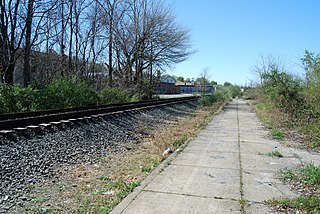
South Coast Rail is a project to build a new southern line of the MBTA Commuter Rail system along several abandoned and freight-only rail lines. The line has been planned to restore passenger rail service between Boston and the towns of Taunton, Berkley, Fall River, Freetown, and New Bedford, on the south coast of Massachusetts. It would restore passenger service to some of the southern lines of the former Old Colony Railroad and the New York, New Haven and Hartford Railroad.

Better Utilizing Investments to Leverage Development (BUILD), previously called Transportation Investment Generating Economic Recovery (TIGER), is a supplementary discretionary grant program included in the American Recovery and Reinvestment Act of 2009. The legislation provided $1.5 billion for a National Surface Transportation System through September 30, 2011, "to be awarded on a competitive basis for capital investments in surface transportation projects".
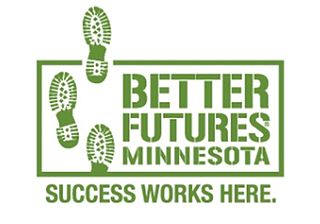
The Network for Better Futures d/b/a Better Futures Minnesota is a non-profit social enterprise based in Minneapolis, Minnesota dedicated to reintegrating high-risk adults, primarily African-American men, into society by providing a platform to help them succeed. The agency works with men with histories of incarceration, substance abuse, chronic unemployment, and homelessness—men who have a high risk of being repeat offenders.
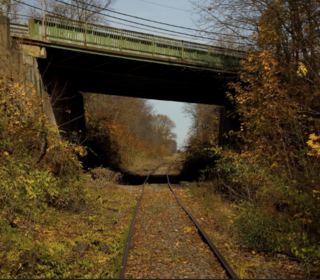
The Salem Branch is a rail freight line in the southwestern part of New Jersey in the United States between the Port of Salem and Woodbury Junction where it and the Penns Grove Secondary converge with the Vineland Secondary approximately 8.5 miles (13.7 km) south of Pavonia Yard in Camden.

















